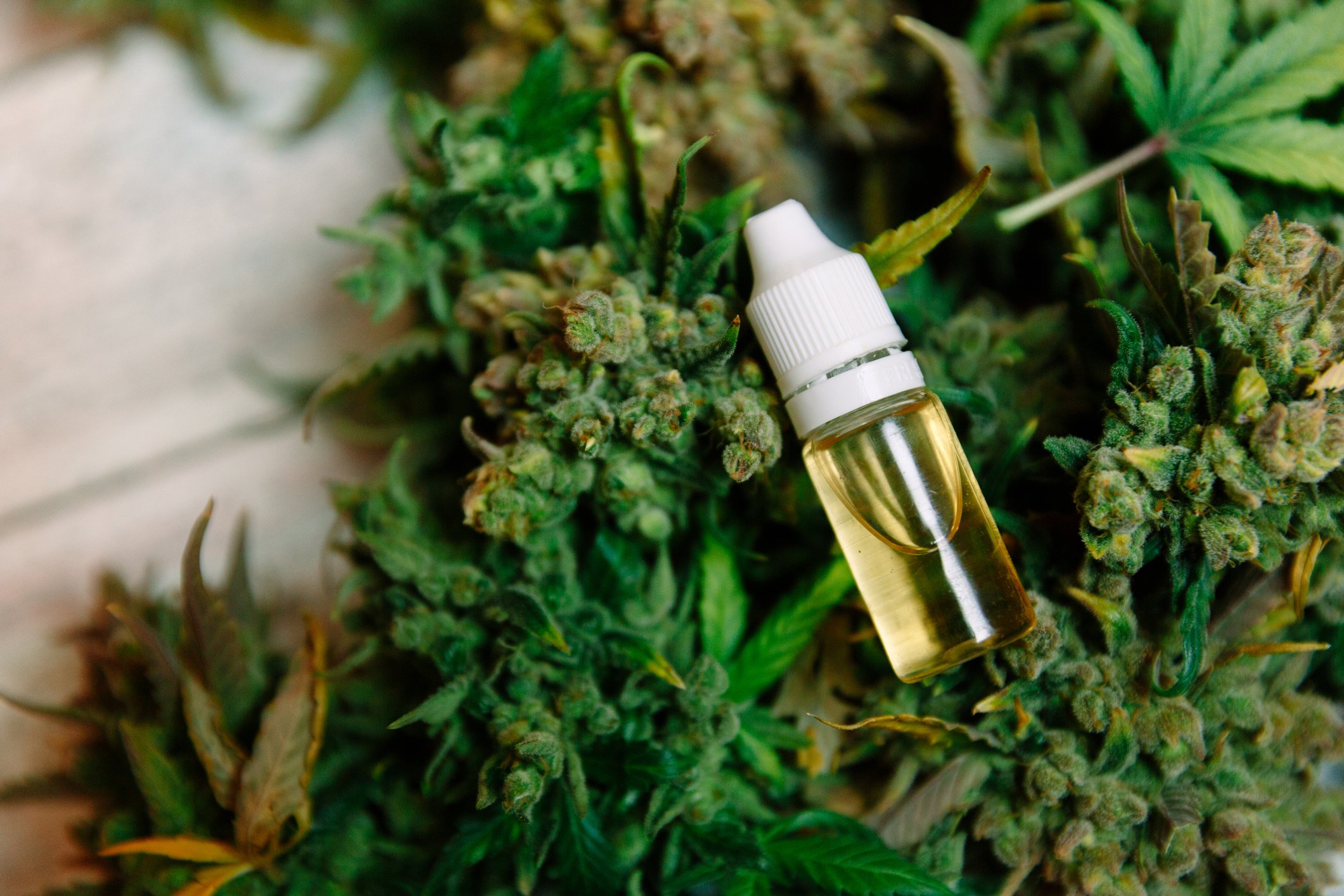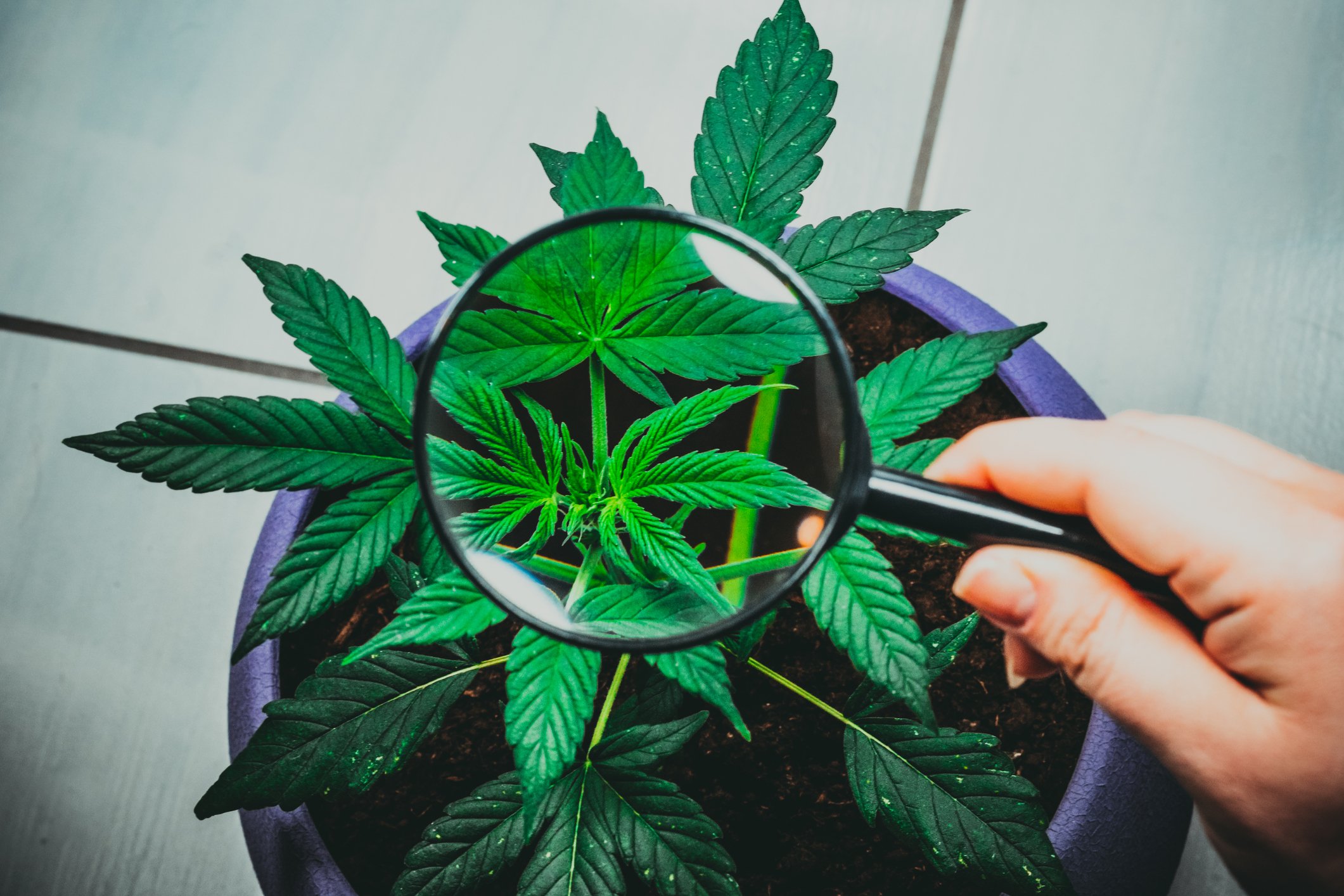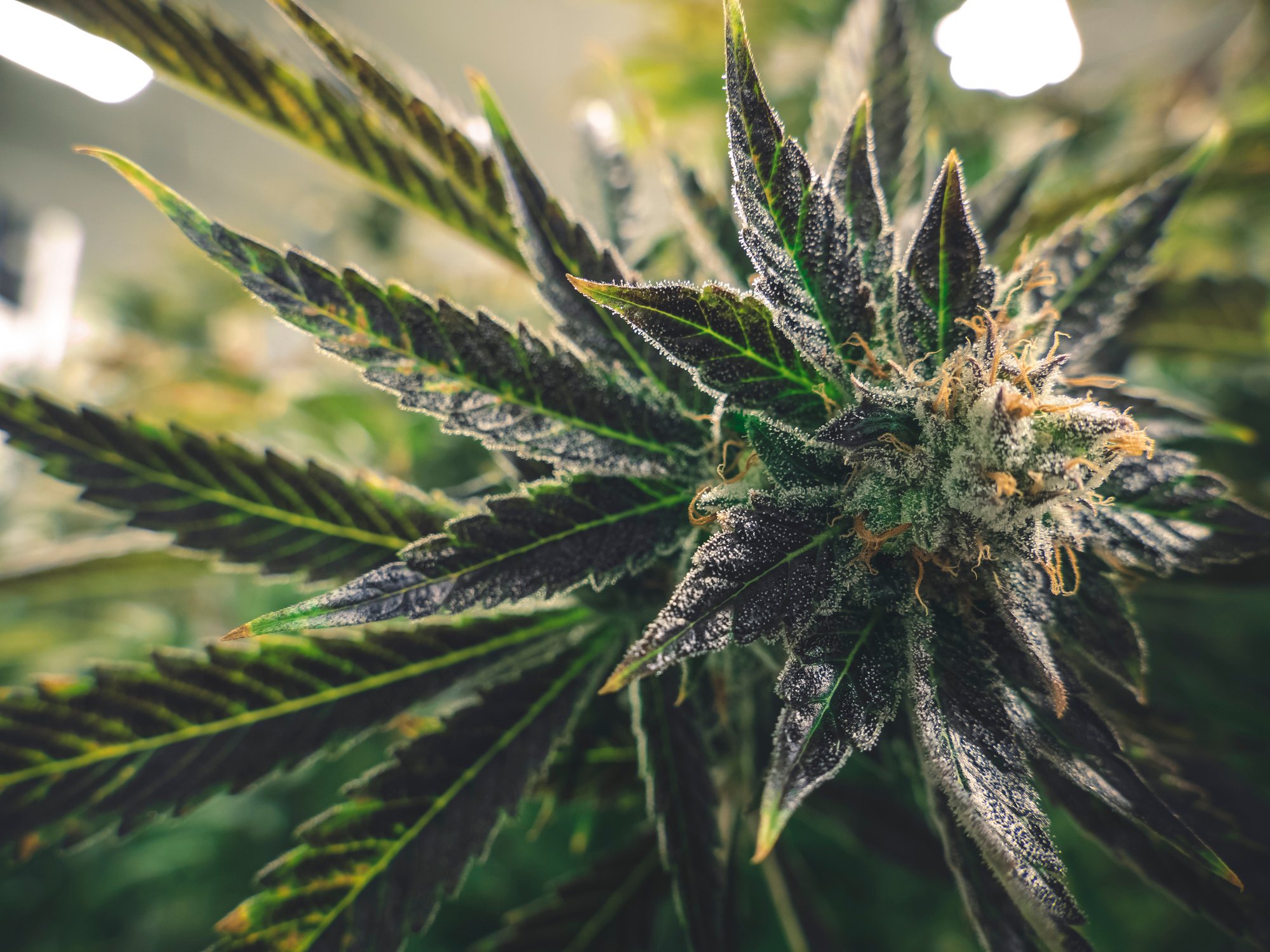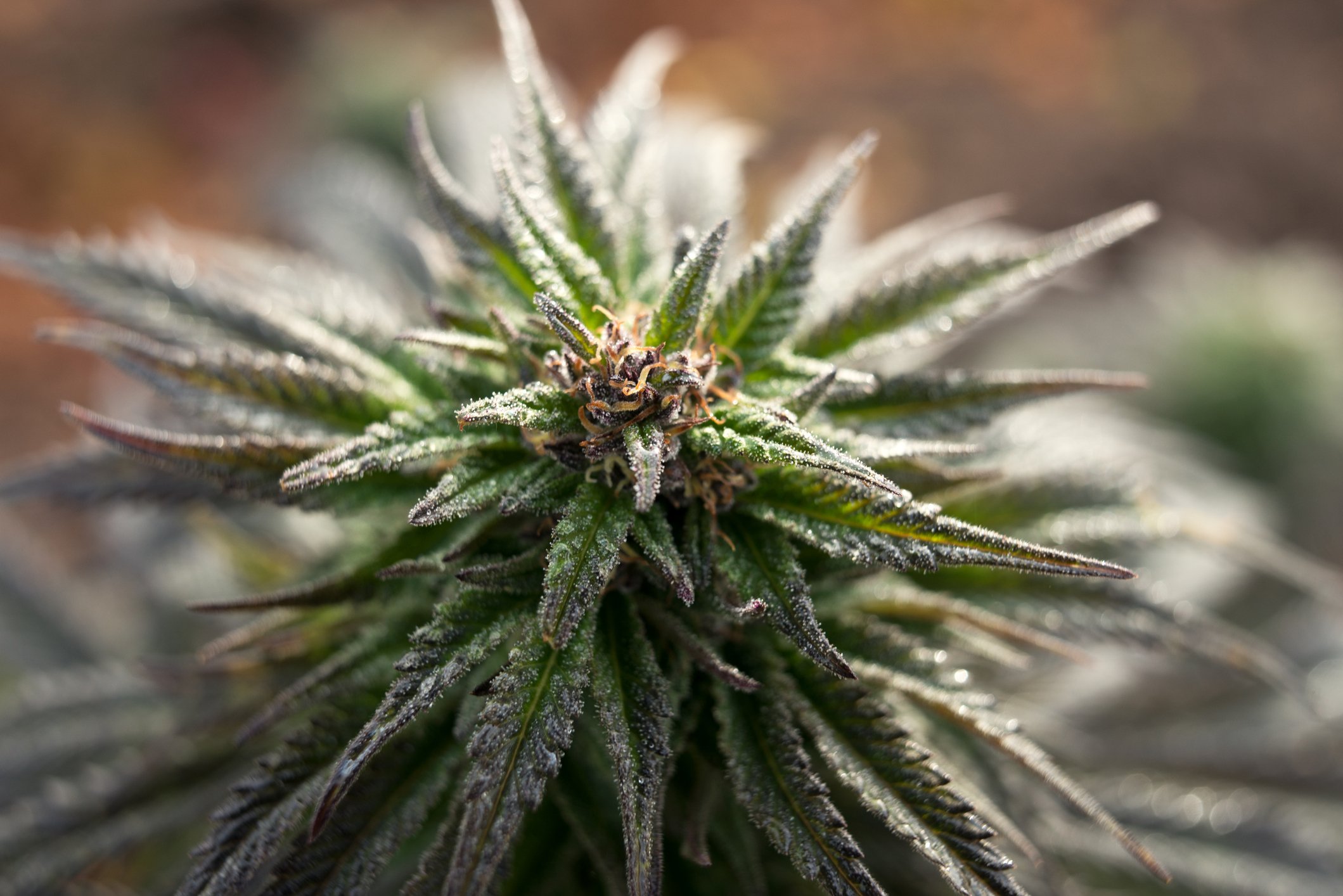Big things are happening in the marijuana industry. Last October, Canada became the first industrialized country in the world, and only the second overall behind Uruguay, to legalize recreational weed. Now, it looks as if Mexico might become the third country to do so before the year is over. We're also seeing strong sales growth in legal U.S. states.
This year, according to a research report issued by Arcview Market Research and BDS Analytics, global cannabis sales are expected to grow by 38% to $16.9 billion. This continued rapid sales growth is why some top marijuana stocks, such as Canopy Growth, have managed to reach large-cap status.
However, Wall Street might be overlooking the fact that good things sometimes come in small packages.

Image source: Getty Images.
Three small-cap pot stocks with a sub-$2 share price that you need to know
In this still-nascent industry, there are dozens of publicly traded marijuana stocks with share prices of under $2. Most of these micro-cap pot stocks come with a laundry list of concerns and are best left at a safe distance. But a handful of sub-$2 marijuana stocks qualify as true small-cap stocks based on their market cap (i.e., above $200 million) and have the makings of intriguing, if not successful, business models.
Don't let their share prices fool you. These three pot stocks could surprise Wall Street and investors.
Check out the latest earnings call transcripts for the companies we cover.
Auxly Cannabis Group: $0.56 share price, $335 million market cap
Arguably the most intriguing company under $2 per share is Auxly Cannabis Group (CBWTF +0.28%).
Originally, this was a royalty company that would provide up-front capital to growers looking to expand their existing capacity or construct new greenhouses. In return, Auxly would receive a percentage of crop yield at a well-below-market rate. It could then turn around and sell the cannabis it received at the market rate, thereby pocketing the difference as profit.
The royalty model seemed like a surefire winner, just as it's been with precious-metal royalty companies. However, dried cannabis flower has shown a propensity to be oversupplied and commoditized in recreationally legal U.S. states. With relatively fixed costs, this would have left Auxly somewhat exposed on the cost front if the same thing happened in Canada.

Image source: Getty Images.
Nowadays, Auxly's operations also include wholly owned grow farms, value-added services, which includes a focus on alternative cannabis consumption options such as oils, and downstream services like retail operations. By dipping its toes into every aspect of the marijuana supply chain, Auxly Cannabis has diversified its revenue stream and ensured that it'll be just fine if one or two of its licensed partners were to struggle. All told, the company has more than a dozen partnerships and should get its hands on approximately 170,000 kilograms of marijuana annually at its peak.
The one downside to be wary of is share-based dilution. With little revenue generation up to this point, Auxly Cannabis has relied on share issuances to raise capital for its acquisitions and deal making. This dilution is the reason why its share price has been weighed down so badly. But with profitability expected to occur in fiscal 2020, Auxly could wind up surprising Wall Street.
Aleafia Health: $1.73 share price, $282 million market cap
Another intriguing "tiny tot" in the cannabis space is Aleafia Health (ALEAF +0.00%), which is currently in the process of acquiring Emblem (NASDAQOTH: EMMBF), another sub-$2 pot stock, for about 173 million Canadian dollars.
Both Aleafia Health and Emblem operate medical clinics and cultivation farms. Medical clinics are particularly important to this combination because they tend to improve patient engagement and loyalty, thereby encouraging consumers to stick within the brand of cannabis being produced by Aleafia and Emblem. Not to mention, medical marijuana patients are far more likely to purchase high-margin cannabis alternatives like oils and sublingual sprays than recreational pot consumers are, thusly setting this duo up for continued long-term success.

Image source: Getty Images.
Assuming the Aleafia Health-Emblem merger receives approval from all needed parties, the combination will feature 40 medical clinics that serve close to 60,000 patients. It'll also bring Emblem's forecasted 40,000 kilos in peak annual production into the fold atop Aleafia Health's projected 98,000 kilos in peak yearly output. Combined, the 138,000 kilos the two could produce annually would be more than the output of Wall Street darling Cronos Group, which, when its investment from Altria closes, will have a market cap of more than 10 times the combined market cap of Aleafia and Emblem.
Emblem has also done a solid job of locking up supply deals with Ontario, Saskatchewan, British Columbia, and Alberta, which Aleafia Health will appreciate given its relatively high peak production forecast.
It's unclear when this combined company could be profitable, but as Canada's sixth-largest pot producer, and given its focus on high-margin medical patients, it's certainly worth keeping a close eye on.
The Supreme Cannabis Company: $1.57 share price, $472 million market cap
Last but not least, make sure The Supreme Cannabis Company (SPRWF +0.00%) is on your watch list.
While we often hear a lot about the top five or seven producers in Canada, junior growers in the 40,000-kilo to 60,000-kilo range can get lost in the mix. Supreme Cannabis Co. isn't a grower you'll want to forget about, though, for two reasons.

Image source: Getty Images.
First is the company's growing efficiency. Supreme Cannabis' 7Acres facility spans 440,000 square feet but is on track to yield at least 50,000 kilos a year at its peak. That's about 114 grams per square foot, or approximately 14% higher than the industry-average yield of about 100 grams per square foot. Being smaller can have its advantages, such as being able to focus on optimizing yield.
Second, this is a company that's devoted to using genetics to grow premium cannabis. Most of the dried flower that'll be hitting dispensary shelves will not be of the premium variety, leaving less competition in Supreme Cannabis' niche. Just as important, premium pot packs a higher price point. Generally speaking, higher price points have better margins in the cannabis industry.
Between the company's production efficiency and its focus on higher-margin premium strains, profitability should come more quickly to Supreme Cannabis than to its similarly sized peers. For that reason, it has a real shot at surprising Wall Street and investors.








